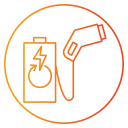Quiet Doesn’t Mean Silent: Noise, Brakes, and Ride
Light daily braking can leave rotors rusty, causing squeals after rain. Perform a few firm stops in a safe area to clean surfaces. If noise persists, inspect pads and shields. Tell us which technique quieted your brakes most effectively.
Quiet Doesn’t Mean Silent: Noise, Brakes, and Ride
EV torque accelerates shoulder wear, and extra weight punishes underinflation. Rotate on schedule, align after curbs or potholes, and check pressures monthly. Post your wear photos and mileage so readers can compare patterns across tire models.
Quiet Doesn’t Mean Silent: Noise, Brakes, and Ride
A rhythmic click that speeds with road speed may be a pebble or CV issue, while a growing hum could hint at a bearing. Swap tires front-to-rear to isolate. Share recordings and speeds to crowdsource likely causes.
Quiet Doesn’t Mean Silent: Noise, Brakes, and Ride
Lorem ipsum dolor sit amet, consectetur adipiscing elit. Ut elit tellus, luctus nec ullamcorper mattis, pulvinar dapibus leo.









